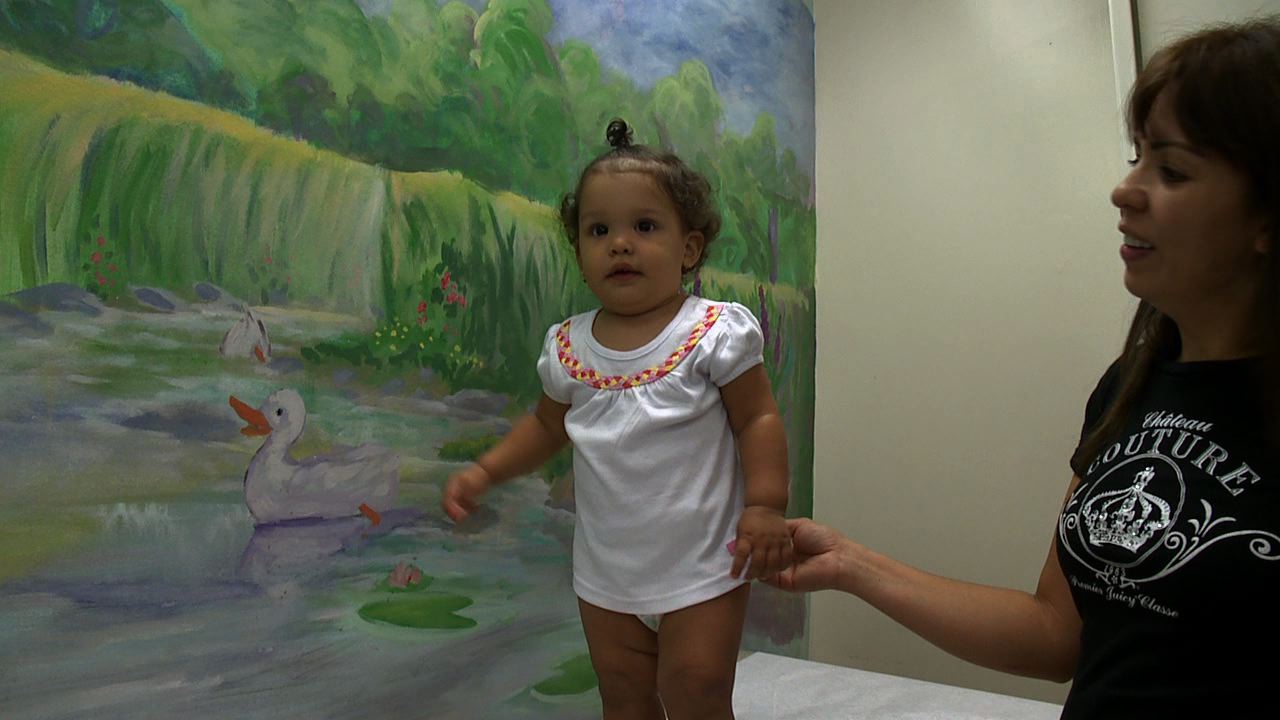Risk Alert Eye Contact
Video Summary
Dr Deborah Fein describes ways to look for appropriate eye contact in a child it can be hard to tell if a child is looking at your forehead, or your hairline, or your glasses and you think they are making eye contact with you.
"The best thing to do is just trust your instinct. If you feel like you're really making emotional contact when the child is making eye contact with you; then you probably are."
— Deborah Fein PhD
Early Warning Signs related to Risk Alert Eye Contact
-
Lack of Eye Contact

Lack of eye contact is one of the possible warning signs for autism. Chistian K. avoids making eye contact with his mother even when he is very close to her, sitting in her lap. Rather, Christian appears more inclined to peer at his candy from different angles than to look at his mother, a sensory seeking behavior often seen in autism.
-
Eye Contact

Eye contact is a critical component of communication and social interactions that emerges before children develop verbal language. In this segment, Dr. Kolevzon explains the importance of eye contact and presents examples of both typically developing children and children on the autism spectrum.
-
Lack of Eye Contact (Smiles Briefly)

A lack of eye contact can be a warning sign for autism. Although both Evan's mother, Raquel, and the evaluator, Connor, persistently try to elicit eye contact and a smile from Evan, he avoids direct eye contact throughout the interaction. Though Evan eventually offers a brief smile after several attempts, he does not look at his mother who is directly in front of him.
Therapies related to Risk Alert Eye Contact
-
Teaching Lucas Eye Contact 2

While playing games with his therapist Georgia, Lucas cannot maintain eye contact during the social interaction and often avoids Georgia's attempts to make eye contact by looking or turning away. This is an excellent example of the fleeting or unusual eye contact that may be an early indicator of autism.
-
Therapy for Improving Eye Contact

Dr. Smith discusses the benefits and limitations of therapeutic interventions designed to improve eye contact in children with autism.
-
Teaching Lucas Eye Contact 1

Lucas, a young boy on the autism spectrum, does not consistently make eye contact with others, an early warning sign. Therapist Georgia tries repeatedly to gain and maintain Lucas' eye contact during a therapy session. Despite her numerous physical and verbal attempts to catch his eye, Lucas spends most of the session turned away from her.
Choose a category
Sign in to your account
×Forgot Your Password?
Not a problem. Simply enter your email address and we will issue a new password.






